Presentation Skills EAP Worksheets & Activities
4-3-2 Presentation Fluency
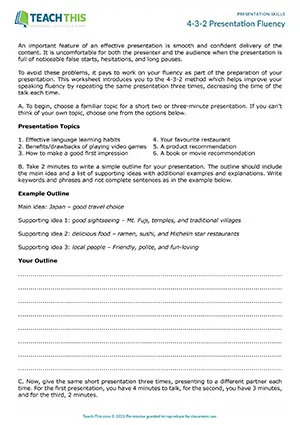
EAP Presentation Fluency Practice - Speaking Activity: Giving a Short Presentation, Freer Practice, Fluency Practice - Pair Work
In this free presentation fluency practice activity, students give short presentations using the 4-3-2 method in order to help improve fluency. First...
Presentation Language
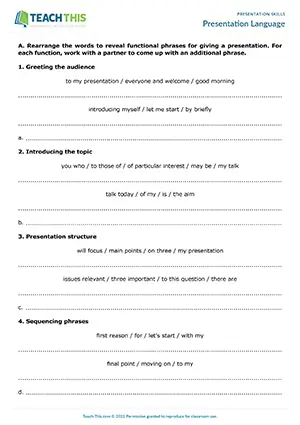
EAP Presentation Language Worksheet - Reading and Writing Exercises: Unscrambling, Writing Phrases - Speaking Activity - Presenting - Pair Work
In this comprehensive presentation language worksheet, students learn functional phrases for giving presentations and deliver a short presentation to practice using...
Present with Style
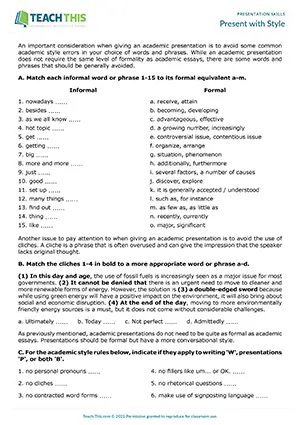
EAP Academic Presentation Skills Worksheet - Reading and Writing Exercises: Matching, Categorising, Ranking, Identifying, Rewriting Sentences
In this engaging presentation skills worksheet, students are introduced to academic style requirements for giving an academic presentation. To begin...
Impromptu Speech Practice
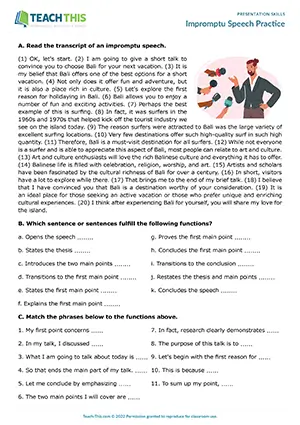
EAP Presentation Skills Worksheet - Reading and Writing Exercises: Identifying, Matching, Brainstorming, Creating an Outline - Speaking Activity: Presenting - Group Work
In this productive impromptu speech worksheet, students review, plan, prepare and deliver impromptu speeches. To begin, students read a transcript of...
Peer Feedback for Presentations
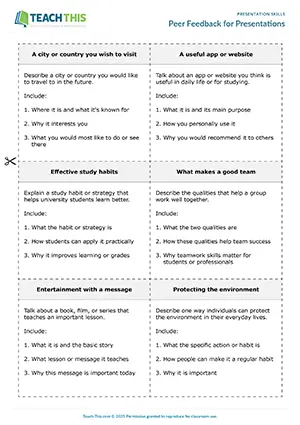
EAP Academic Presentation Skills Activity - Reading and Writing: Categorising, Writing Sentences - Speaking: Discussion, Presenting, Peer Feedback - Group Work
This rewarding presentation skills activity develops students' ability to give constructive peer feedback on presentations. First, students complete...
Presentation Preparation and Practice
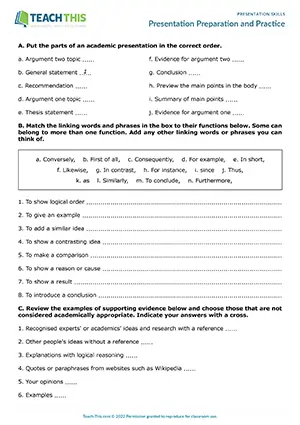
EAP Academic Presentation Skills Worksheet - Reading and Writing: Ordering, Matching, Identifying, Gap-fill - Speaking: Delivering a Presentation - Group Work
In this useful presentation practice worksheet and activity, students review presentation structure and language and then prepare and deliver a presentation...
Presentation Round Robin
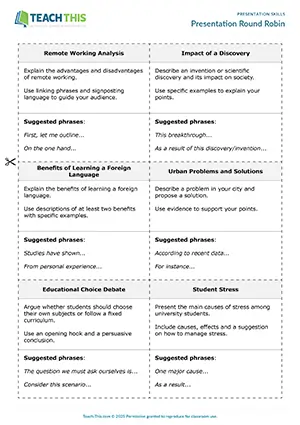
EAP Academic Presentation Skills Activity - Presenting, Asking and Answering Questions, Peer Feedback - Group Work
In this free presentation skills activity, students practice giving short presentations, asking and answering follow-up questions, and providing focused...

